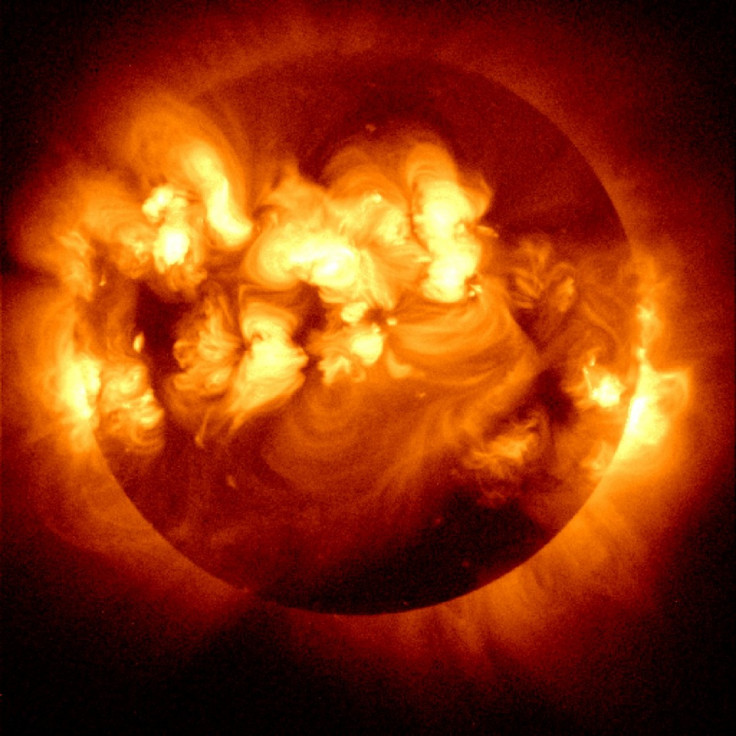The Sun Blazes with Bigger Solar Flares

The sun has let off some heat this week in the form of unusually strong class solar flares, that have blazed from its surface letting of a giant ball of solar material.
It started on Sept 6 when an M-Class flare erupted, followed by another on Tuesday, which came as a X2.1 class solar flare almost 4 times as strong as the first one. Another flare was unleashed on the same time reaching its peak strength eight minutes later.
The flares are classified according to how powerful they are, as A, B, C, M or X, with X being the most powerful. The latest flare SDO detected was an X-class flare.
According to NASA there was a coronal mass ejection (CME) associated with all three flares, but none of them are expected to travel directly to earth, however NASA computer models suggest that the latest CME may give a glancing blow to Earth on the morning of September 11, and might create some aurora.
The flares are seen first, as the light and radiation take only eight minutes to get to Earth. The CME moves slower and takes days, in the same way that thunder follows lightning.
The powerful blazes are a part of a larger pattern as Solar activity has been booming over the past few months and as the sun is transitioning to a busier cycle in 2013 scientists expect more solar activity in the next three to five years.
The largest recent solar flare was in December 2006, which measured X9 on the solar flare scale.
A solar flare, known as a solar prominence is a large, bright feature extended outwards from the sun's surface. Prominences are anchored to the Sun's surface in the photosphere, and extend outwards into the Sun's hot outer atmosphere, called the corona, NASA reported.
A prominence forms over timescales of about a day, and stable prominences may persist in the corona for several months, looping hundreds of thousands of miles into space. Scientists are still researching how and why prominences are formed.
© Copyright IBTimes 2024. All rights reserved.




















